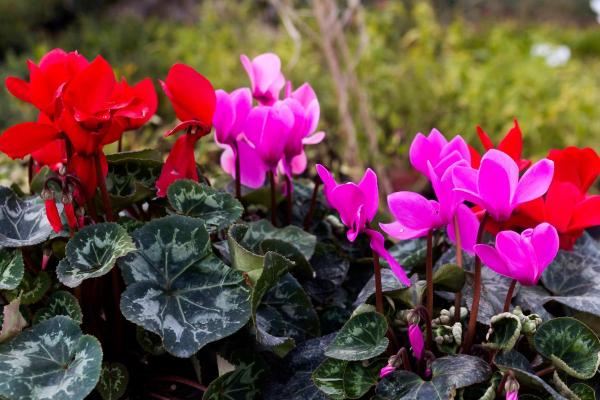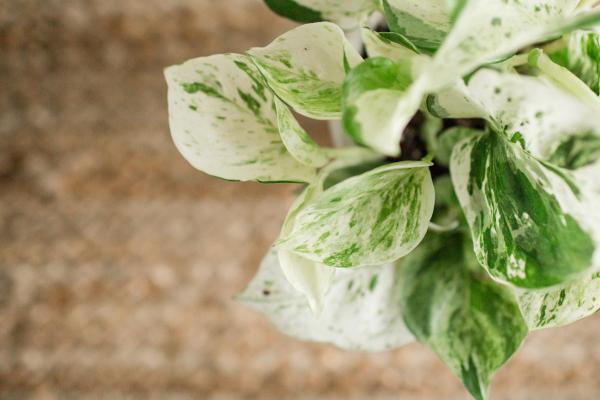Plants That Are Toxic for Cats



See files for Cats
Cats are naturally curious animals that often use their mouths to explore their environment. They are also known to eat parts of plants, especially types of grasses. Although the reasons for this behavior are poorly understood, it is believed they do so to help digestion. Unfortunately, there are plants which are dangerous for cats which can cause poisoning if ingested. Ensuring we keep these plants away from the cat's reach or out of their environment completely is an important safeguard. At AnimalWised, we discover the dangerous cat plants we need to avoid with this list of 40 plants that are toxic for cats.
- Lilies (Lilium spp.)
- Chrysanthemum (Chrysanthemum spp.)
- Cyclamen or Sowbread (Cyclamen spp.)
- Tulip (Tulipa spp.)
- Common lantana (Lantana camara)
- Oleander (Nerium oleander)
- Golden pothos (Epipremnum aureum)
- Common ivy (Hedera helix)
- Aloe vera (Aloe vera)
- Smooth hydrangea (Hydrangea arborescens)
- Other plants toxic to cats
- Symptoms of a cat poisoned by plants
Lilies (Lilium spp.)
Of all the plants we are likely to keep in our home, perhaps the most toxic to cats is the lily. Species of the genus Lilium are considered true lilies and they are popular for their elegantly shaped flowers, beautiful colors and pleasing aroma. Although not all, many plants in the Liliaceae family represent a great threat to cats.
True lily species such as day lily, tiger lily or Asiatic lily are toxic to cats. Not only the stem, leaves and flowers are toxic, but the pollen is particularly poisonous. Even the water in which lilies are kept can be toxic if the cat ingests it.
Due to this intoxication, ingestion of any part of the lily can cause acute kidney failure in cats. Generally, symptoms of poisoning appear 6-12 hours after ingestion. They include:
- Vomiting
- Loss of appetite
- Weakness or lethargy
- Polydipsia (increased water consumption)
- Polyuria (increased urination)
- Tachycardia or arrhythmia
The signs worsen as kidney failure progresses. Disorientation, incoordination or seizures may appear. In the absence of treatment, lily poisoning can result in the death of the animal.

Chrysanthemum (Chrysanthemum spp.)
The characteristic flowers of the chrysanthemum contain pyrethrin compounds. Very useful for the plant, these compounds act as a natural insecticide. Unfortunately, they are not only toxic to insects, but also to various mammals, including cats.
Simple contact with the plant can cause dermatitis (i.e. skin inflammation) and ingestion can result in poisoning characterized by:
- Vomiting
- Diarrhea
- Hypersalivation
- Incoordination

Cyclamen or Sowbread (Cyclamen spp.)
Cyclamen is a genus of bulbous plants that have their origin in the forests of the Mediterranean basin. Its flowering occurs typically in the winter months, making it a highly appreciated plant for gardeners who want botanical beauty year round. Unfortunately, it is not as suitable for gardeners who have cats as pets.
The tubers of the plant contain a glucoside that is highly toxic to cats, resulting in a type of poisoning characterized by the following clinical signs:
- Hypersalivation
- Vomiting and diarrhea
- Heart rhythm alterations
- Seizures
- Death in acute cases
In addition to the plants that are toxic to cats, you can read our related guide to discover other types of cat poisons.

Tulip (Tulipa spp.)
Tulips are an iconic plant in gardens during the spring. Their large and vibrantly colored flowers give tulips great ornamental power, but they are unfortunately also poisonous plants for cats. The bulb of tulips concentrates high levels of glycosides called tulipalin A and B, which are capable of generating poisoning characterized by:
- Vomiting
- Diarrhea
- Depression
- Hypersalivation
Poisoning due to plants toxic to felines is not the only cause of diarrhea and vomiting in cats. Always contact a veterinarian if these symptoms persist for more than 24-48 hours or if they are accompanied by more serious symptoms such as loss of consciousness.

Common lantana (Lantana camara)
Lantana is a shrub which flowers in clusters. It is a very popular plant on balconies and patios. Its color and long flowering season (from spring to late autumn) make it highly appreciated as an ornamental plant. However, it is also a toxic plant for cats.
The green leaves and fruits contain lantanin, a triterpene that has the ability to cause liver and kidney failure in cats. Contact with the mouth or skin can be enough to cause significant irritation, resulting contact dermatitis, ulcers or even necrosis of the skin or mucous membranes.
Learn more about inflammatory skin diseases in cats with our article on feline atopic dermatitis.

Oleander (Nerium oleander)
Oleander is a shrub native to the Mediterranean basin that is frequently found as an ornamental plant in parks and gardens. Despite its close proximity to the public, oleander is not only a plant that is toxic to cats, it is toxic to people.
The toxicity of oleander is due to the presence of cardiotoxic glycosides, molecules which produce serious cardiac alterations by affecting the sodium/potassium pump of the heart cells. Symptoms of poisoning appear within a few hours after ingestion, and include:
- Abdominal pain
- Hypersalivation
- Depression
- Vomiting and diarrhea
- Muscle contractions
- Dyspnea (breathing difficulty)
- Tachycardia and arrhythmia
- Coma
If treatment is insufficient or carried out too late, oleander poisoning can result in the death of the animal.

Golden pothos (Epipremnum aureum)
Despite being one of the most common indoor plants, golden pothos is also on the list of species toxic to cats. Its toxicity is due to its high calcium oxalate content which can cause:
- Hypersalivation
- Irritation of the oral cavity
- Pain and swelling of the mouth, tongue and lips
- Vomiting
- Dysphagia (difficulty swallowing)

Common ivy (Hedera helix)
Ivy is one of the most commonly used vines in gardens, largely due to its decorative appearance and ease of growth. It is also a poisonous plant for cats. Although the fruits are toxic, it seems that the leaves are more dangerous still, since they contain a higher content of hederagenin. This is the triterpenoid saponin responsible for the poisoning of cats. The consumption of ivy by a cat is associated with the appearance of:
- Hypersalivation
- Vomiting
- Diarrhea
- Abdominal pain
Learn about other dangerous plants for cats with an article on whether ferns are poisonous to cats.

Aloe vera (Aloe vera)
You may be surprised to find Aloe vera part of a list of poisonous plants for cats. Aloe gel is commonly used as a natural remedy, both for humans and cats. It is even sold in drinks for huma consumption. However, aloe sap (a type of yellowish latex found just under the skin of the leaves) is toxic to these animals. Its content of saponins and anthroquinones can cause poisoning characterized by:
- Hypersalivation
- Vomiting and diarrhea
- Abdominal pain
- Lethargy
- Conjunctivitis
Conjunctivitis is a result of contact, resulting in the cat's eyes becoming swollen and red.

Smooth hydrangea (Hydrangea arborescens)
The hydrangea is one of the most striking summer-blooming plants due to its large and colorful inflorescence. Both the leaves and flowers contain a cyanogenic glucoside (hydrangin) and saponins that can cause a poisoning in cats. This means they are toxic to cats and ingestion can result in:
- Vomiting and diarrhea
- Abdominal pain
- Depression
- Cyanosis
- Muscle weakness
- Seizures
- Coma

Other plants toxic to cats
Throughout the article we have described some of the mist common plants that are toxic to cats, but there are many more which are dangerous cat plants. The following is a more extensive list of plants that are harmful to felines:
- Holly (Ilex aquifolium)
- Common poppy (Papaver rhoeas)
- Belladonna lily (Amaryllis spp.)
- Azaleas and rhododendrons (Rhododendron)
- Begonia (Begonia spp.)
- Calla lily (Zantedeschia aethiopica)
- Mother of millions (Kalanchoe tubiflora)
- Horse chestnut (Aesculus spp.)
- Jerusalem cherry (Solanum pseudocapsicum)
- Natal lily (Clivia minata)
- Swiss cheese plant (Monstera Deliciosa)
- Foxglove (Digitalis purpurea)
- Dumbcane (Dieffenbachia amoena)
- Song of India (Dracaena reflexa)
- Spath (Spathiphyllum)
- Eucalyptus (Eucalyptus spp.)
- Fig trees (Ficus spp.)
- Flamingo flower (Anthurium scherzeranum)
- Poinsettia (Euphorbia pulcherrima)
- Crane flower (Strelitzia reginae)
- Wisteria (Wisteria spp.)
- European black nightshade (Solanum nigrum)
- Common hyacinth (Hyacintus orientalis)
- Elephant ear (Alocasia spp.)
- Sago palm (Cycas revoluta)
- Marijuana (Cannabis sativa)
- Daffodils (Narcissus spp.)
- Autumn crocus (Colchicum autumnale)
- Castor bean (Ricinus communis)
- Yew (Taxus)

Symptoms of a cat poisoned by plants
The symptoms of plant poisoning in cats and their severity can vary depending on factors such as the:
- Route of exposure which is either dermal, oral or inhalation. The majority of poisoning symptoms occur as a result of ingesting the poison, generally accidentally.
- Amount of plant ingested.
- Concentration of the toxic substance in the plant.
- Type of toxic substance present in the plant.
Although the symptoms associated with plant poisoning can be varied, in cats the most frequent signs are usually:
- Digestive signs: such as vomiting, diarrhea, loss of appetite, hypersalivation, abdominal pain, etc.
- Nervous signs: seizures, disorientation, depression, coma, etc.
- Dermatological alterations: irritation, redness, necrosis of the skin or mucous membranes, etc.
- Cardiac disorders: tachycardia, bradycardia, arrhythmias, etc.
- And other alterations: such as liver failure, kidney failure, etc.
Whenever you detect any of these symptoms and suspect that your cat may have consumed some type of toxic plant, it is essential that you go urgently to a veterinary center. Whenever possible, provide a sample or photograph of the ingested plant. In cases of severe poisoning, quick action will be essential for the survival of the animal.
Discover more about the symptoms and treatment of poisoning in cats with our related guide.
This article is purely informative. AnimalWised does not have the authority to prescribe any veterinary treatment or create a diagnosis. We invite you to take your pet to the veterinarian if they are suffering from any condition or pain.
If you want to read similar articles to Plants That Are Toxic for Cats, we recommend you visit our Other health problems category.
- American Society for the Prevention of Cruelty to Animals (ASPCA). Toxic and non toxic plant list - Cats.















